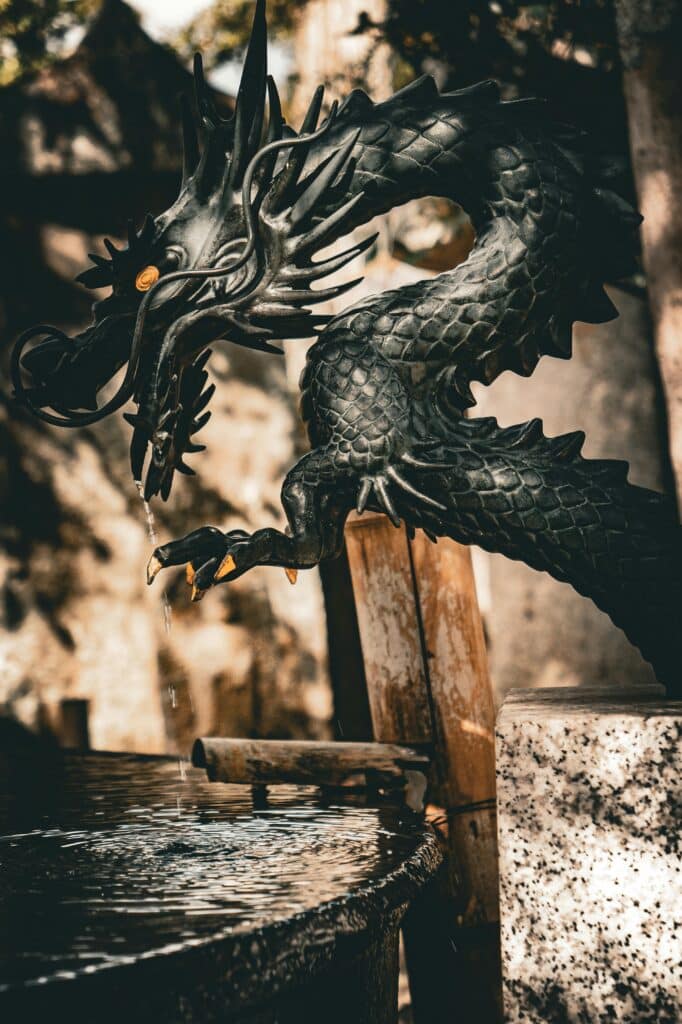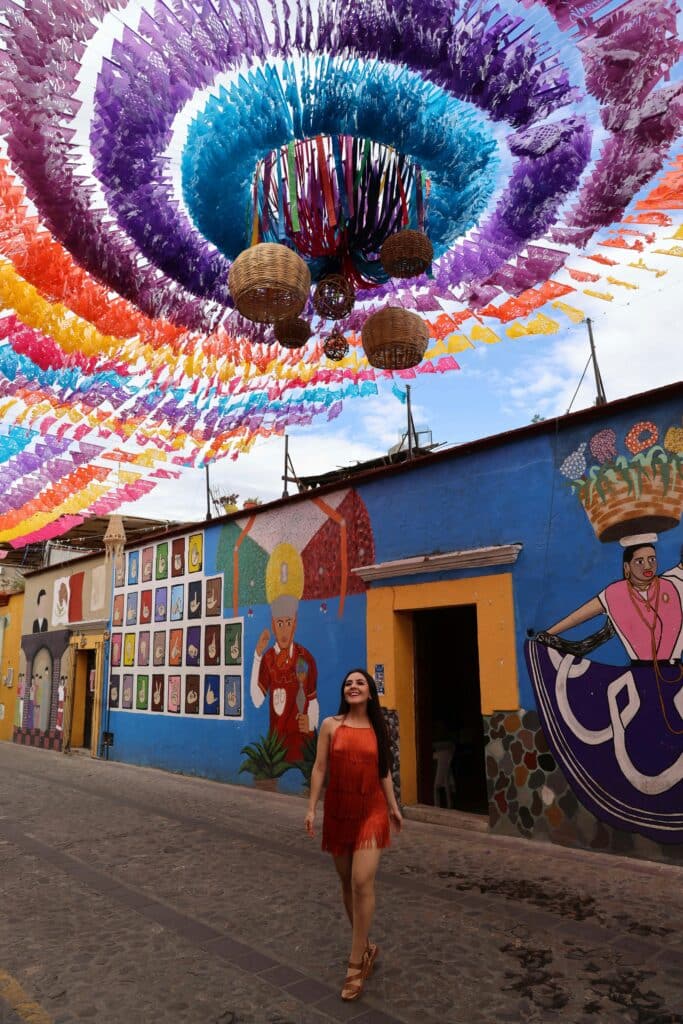Immerse yourself in the diverse and vibrant indigenous cultures of Costa Rica, as we explore the best ways to experience their rich traditions and customs. From the captivating rhythms of traditional music to the exquisite artistry of handcrafted crafts, each indigenous community offers a unique window into their fascinating heritage. Embark on a journey through lush rainforests, visit remote villages, and engage with welcoming locals, as you gain a deeper understanding and appreciation for the cultural tapestry that weaves through this enchanting country.

Understanding Costa Rica’s Indigenous Origins
The pre-Columbian era
Costa Rica’s indigenous origins can be traced back to the pre-Columbian era, before the arrival of European colonizers. Indigenous people inhabited the region for thousands of years, developing rich cultures and societies. They had their own languages, traditions, art forms, and ways of life that were deeply rooted in their connection with nature.
Major indigenous groups in Costa Rica
Costa Rica was home to several major indigenous groups, each with their own distinct customs and traditions. Some of the prominent indigenous groups include the Boruca, Maleku, Chorotega, Bribri, Ngöbe-Buglé, and many others. Each group had its own language, cultural practices, and artistic expressions, which are still preserved and celebrated today.
Impact of Spanish colonization on indigenous cultures
The arrival of Spanish colonizers in the 16th century brought significant changes to the indigenous cultures of Costa Rica. The Spanish sought to assimilate and convert the indigenous people, leading to the decline of many indigenous languages, traditions, and belief systems. However, despite colonization, the indigenous cultures of Costa Rica have managed to survive and thrive, thanks to the resilience and determination of the indigenous communities.
Indigenous Languages of Costa Rica
Overview of the indigenous languages
Costa Rica is home to a diverse range of indigenous languages, each with its own unique characteristics. Some of the indigenous languages spoken in Costa Rica include Bribri, Maleku, Boruca, Ngöbe-Buglé, Chorotega, and Cabécar. These languages are integral to the cultural identity of the indigenous communities and efforts are being made to preserve and revitalize them.
Efforts to preserve endangered indigenous languages
Recognizing the value and importance of indigenous languages, organizations and communities in Costa Rica have been working diligently to preserve and revitalize endangered languages. Efforts include language revitalization programs, cultural exchanges, and the integration of indigenous languages in educational institutions. These initiatives play a crucial role in keeping the indigenous languages alive and ensuring they are passed down to future generations.
Where and how to learn indigenous languages in Costa Rica
If you are interested in learning indigenous languages in Costa Rica, there are various opportunities available. Indigenous communities often offer language-learning programs and workshops, providing an immersive experience to learn directly from native speakers. Additionally, cultural centers, language institutes, and universities in Costa Rica may offer courses or resources for those interested in studying indigenous languages.
Traditional Indigenous Music and Dance
Types of indigenous music
Indigenous music in Costa Rica is diverse and vibrant, reflecting the unique cultural heritage of each indigenous group. Traditional instruments, such as drums, flutes, maracas, and ocarinas, are commonly used to create rhythmic and melodic sounds. The music often tells stories of nature, ancestral traditions, and daily life, showcasing the deep connection between the indigenous communities and their surroundings.
Significance of dances in indigenous cultures
Dance plays a central role in indigenous cultures, serving as a way to express emotions, communicate stories, and celebrate important events. Each indigenous group has its own distinct dance styles, characterized by intricate footwork, rhythmic movements, and vibrant costumes. Dances often depict mythical or historical events, and participation in these dances strengthens the cultural identity and sense of community among the indigenous people.
Places to witness indigenous music and dance performances
To truly experience the beauty of indigenous music and dance in Costa Rica, there are several places you can visit. Indigenous festivals, such as the Boruca Mask Festival and the Maleku Cultural Festival, showcase traditional music and dance performances. Cultural centers and museums, like the Museo Nacional de Costa Rica in San Jose, also feature exhibitions and events that highlight indigenous music and dance. Additionally, local communities often organize cultural presentations or workshops, providing an intimate and immersive experience.
Indigenous Art and Handicrafts
Overview of indigenous artforms
Indigenous art in Costa Rica is incredibly diverse and encompasses a wide range of mediums, including pottery, weaving, painting, carving, and jewelry-making. Each art form tells a unique story and reflects the cultural heritage of the indigenous communities. From intricately woven textiles to beautifully painted pottery, indigenous art is a visual representation of centuries of tradition and artistic expression.
Distinct styles by different tribes
Different indigenous tribes in Costa Rica have their own distinct artistic styles, often influenced by their surroundings, mythology, and ancestral traditions. For example, the Boruca people are known for their elaborately carved wooden masks, which are used in their traditional festivities. The Chorotega tribe is renowned for its ceramic art, characterized by intricate patterns and vibrant colors. By exploring the diverse art forms of each tribe, you can gain a deeper understanding of their unique cultural identities.
Best places to buy indigenous arts and crafts in Costa Rica
If you’re looking to purchase indigenous arts and crafts in Costa Rica, there are several recommended places to visit. Local artisan markets, such as the Feria Verde and the Mercado Nacional de Artesanías, offer a wide selection of handmade products directly from indigenous artisans. Cultural centers and museums often have gift shops where you can find authentic indigenous art. It is important to support local artisans and ensure the fair trade of their crafts.

Costa Rican Indigenous Cuisine
Key ingredients in indigenous cuisine
Costa Rican indigenous cuisine is characterized by its use of fresh and locally sourced ingredients, many of which have been staples in indigenous communities for centuries. Some key ingredients include corn, beans, plantains, yucca, and a variety of tropical fruits. Indigenous cuisine often incorporates traditional cooking methods, such as steaming, roasting, and wrapping food in banana leaves, resulting in unique flavors and textures.
Iconic indigenous dishes
Several iconic dishes have emerged from Costa Rican indigenous cuisine, each offering a taste of the rich cultural heritage of the indigenous communities. For example, “Gallo Pinto” is a popular dish made with rice, beans, and a variety of spices, often served for breakfast. “Olla de Carne” is a hearty traditional stew that combines different meats, vegetables, and herbs. “Picadillo de Arracache” is a savory dish made with yucca and other root vegetables, cooked in a flavorful sauce.
Restaurants that specialize in indigenous cuisine
To experience the flavors of Costa Rican indigenous cuisine, there are restaurants throughout the country that specialize in traditional dishes. In San Jose, you can visit Restaurante Silvestre, which offers a menu inspired by indigenous ingredients and cooking techniques. In Limon, Manzanillo, and other coastal areas, you can find restaurants that serve delicious seafood dishes influenced by the culinary traditions of the indigenous communities in those regions.
Terraba-Sierpe Wetlands: Echoes of the Boruca Tribe
History of the Boruca Tribe
The Boruca Tribe has a rich history in Costa Rica, dating back centuries. They are known for their strong sense of cultural preservation and resistance against colonization. The tribe’s ancestral lands are located near the Terraba-Sierpe Wetlands, providing a lush environment that has shaped their way of life and traditions.
Annual festivals and rituals
One of the most renowned aspects of the Boruca Tribe is their annual Mask Festival, which takes place in late December. During this festival, the Boruca people showcase their traditional dances, music, and the intricate wooden masks they carve by hand. These masks represent their ancestors, spirits, and local wildlife. In addition to the mask festival, the Boruca Tribe also celebrates other rituals and ceremonies throughout the year, highlighting their connection to nature and their spiritual beliefs.
Exploring the Boruca Village experience
For a truly immersive experience, visiting the Boruca village near the Terraba-Sierpe Wetlands is highly recommended. The village offers opportunities for tourists to interact with the Boruca people, learn about their customs, participate in workshops to create traditional handicrafts, and even witness the mask carving process. This firsthand experience allows visitors to gain a deeper understanding of the Boruca Tribe’s cultural heritage and the importance of preserving their traditions.

Visiting the Maleku Reserve: Experience their Rich Culture
Background of the Maleku community
The Maleku community is another indigenous group in Costa Rica that has managed to preserve its rich cultural heritage. The Maleku Reserve, located in the northern part of the country, is an important hub for experiencing their traditional way of life. The Maleku people have a deep connection with nature and their surrounding environment, which is reflected in their spiritual beliefs and customs.
Workshops about Maleku traditions and customs
When visiting the Maleku Reserve, tourists have the opportunity to participate in workshops that highlight the Maleku traditions and customs. These workshops can include learning traditional weaving techniques, understanding the spiritual significance of certain plants, or engaging in storytelling sessions that share the Maleku oral traditions. The Maleku people are eager to share their knowledge and cultural practices with visitors, creating an enriching and educational experience.
Ecotourism initiatives in Maleku Reserve
In addition to cultural experiences, the Maleku Reserve offers various ecotourism activities, allowing visitors to explore the pristine natural surroundings. Guided hikes through the rainforest, wildlife observation tours, and riverboat excursions are just some of the opportunities available in the reserve. These activities not only support the Maleku community economically but also promote sustainable tourism practices that protect the environment and the indigenous way of life.
Chorotega Indigenous Ceramic Art
History of Chorotega ceramics
The Chorotega tribe has a long history of creating beautiful ceramics. The art of Chorotega pottery dates back to pre-Columbian times, with the Chorotega people mastering the craft for centuries. Their pottery is characterized by intricate designs and vibrant colors, often depicting animals, plants, and geometric patterns. Chorotega ceramics have become iconic representations of indigenous art in Costa Rica.
How the ceramic art is made
Chorotega ceramic art involves a meticulous process that requires skill and patience. The pottery is made from locally sourced clay, which is shaped into various forms, such as bowls, vases, and decorative figurines. The designs are then meticulously etched onto the surface using traditional tools, and vibrant colors are applied using natural pigments. Finally, the pottery is fired in kilns, resulting in the distinctive Chorotega ceramic art that has captivated art enthusiasts for generations.
Where to buy Chorotega ceramics
To purchase authentic Chorotega ceramics, you can visit artisan markets, cultural centers, and galleries that specialize in indigenous art and crafts. The town of Guaitil, located in the Guanacaste province, is renowned for its Chorotega pottery workshops and galleries, making it an ideal place to shop for unique and intricately designed ceramics. By supporting local Chorotega artisans, you contribute to the preservation of their cultural heritage and the sustainability of their craft.
Cultural Visits to the Bribri Tribe
The Bribri’s spiritual beliefs and practices
The Bribri Tribe is deeply connected to their spiritual beliefs and practices, which play a significant role in their everyday lives. Their spiritual beliefs revolve around the importance of maintaining harmony with nature and the spirits that inhabit their surroundings. Rituals, ceremonies, and offerings are central to the Bribri culture, and visitors have the opportunity to learn about these practices during cultural visits to their communities.
Traditional Bribri architecture
The Bribri people have a unique architectural style that reflects their cultural identity and connection to nature. Traditional Bribri houses, known as “ranchoes” or “acaos,” are made from locally sourced materials, such as bamboo, palm leaves, and wood. These structures are built to blend harmoniously with the natural environment and are designed to withstand the tropical climate. Exploring these traditional Bribri houses provides insight into their sustainable construction methods and cultural traditions.
Bribri’s iconic art of chocolate-making
One of the most iconic art forms of the Bribri Tribe is the traditional art of chocolate-making. The Bribri people have been cultivating cacao for centuries and have developed unique techniques to transform the beans into rich, flavorful chocolate. Cultural visits to Bribri communities often include demonstrations and workshops on chocolate-making, where visitors can learn about the whole process from harvesting the cacao pods to grinding the beans and creating their own chocolate. This immersive experience allows you to appreciate the craftsmanship and cultural significance of Bribri chocolate-making.
Experiencing the Ngöbe-Buglé Culture in Costa Rica
Overview of Ngöbe-Buglé culture
The Ngöbe-Buglé people have a distinct culture that sets them apart from other indigenous groups in Costa Rica. They have their own language, customs, and social norms that shape their way of life. The Ngöbe-Buglé are known for their intricate handicrafts, vibrant textiles, and strong communal ties.
Traditional dress and textiles of Ngöbe-Buglé
The traditional dress of the Ngöbe-Buglé people is a visual representation of their cultural identity and artistic craftsmanship. Women wear brightly colored blouses, skirts, and head coverings adorned with intricate patterns, which are meticulously hand-woven using traditional techniques. Men often wear shirts and pants made from woven fabric, along with accessories such as straw hats and beaded necklaces. Textiles play a significant role in Ngöbe-Buglé culture, with each design and motif carrying deeper meanings.
Communal life and social norms in Ngöbe-Buglé communities
Ngöbe-Buglé communities are characterized by their strong sense of community and collective decision-making processes. Communal work, known as “faenas,” is a common practice where members of the community come together to work on a project, such as building a house or cultivating crops. The Ngöbe-Buglé also have a deep respect for nature and the environment, with traditional practices centered around sustainable living. Experiencing Ngöbe-Buglé culture gives visitors an opportunity to witness the close-knit community dynamics and learn from their harmonious relationship with nature.
Immerse Yourself in Costa Rica’s Indigenous Cultures
Best Ways to Experience Costa Rica’s Indigenous Cultures
Costa Rica is a vibrant country with a rich cultural heritage, and exploring its indigenous cultures is a great way to truly immerse yourself in the local customs, traditions, and artistic expressions. From learning indigenous languages and witnessing traditional music and dance performances, to discovering unique art forms and savoring indigenous cuisine, there are countless ways to experience the diversity and beauty of Costa Rica’s indigenous cultures.
By understanding the pre-Columbian origins of Costa Rica’s indigenous groups and recognizing the impact of Spanish colonization, you can gain a deeper appreciation for the resilience and cultural preservation efforts of these communities. Whether you choose to visit the Terraba-Sierpe Wetlands to witness the Boruca Tribe’s vibrant mask festival, or explore the Maleku Reserve to learn about their spiritual beliefs and customs, each cultural visit provides a unique glimpse into the indigenous way of life.
Don’t miss the chance to explore the Chorotega pottery workshops in Guaitil, where you can witness the intricate ceramic art-making process firsthand. And for an enriching experience, visit Bribri communities to learn about their spiritual practices, traditional architecture, and the iconic art of chocolate-making.
By immersing yourself in Costa Rica’s indigenous cultures, you not only support the preservation of their traditions and art forms but also create lasting memories and forge connections with the vibrant and diverse indigenous communities. So, pack your bags, open your heart to new experiences, and embark on a journey of discovery through the indigenous cultures of Costa Rica.







0 Comments